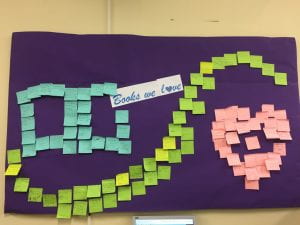Drawing as a narrative tool
 HD wallpaper: person drawing angel, kids, child, children, elementary, little kids 360x640px (480P) free download from wallpaperflare.com_wallpaper(2)
HD wallpaper: person drawing angel, kids, child, children, elementary, little kids 360x640px (480P) free download from wallpaperflare.com_wallpaper(2)
I came across an interview with Mo Willems thanks to a post on the Facebook Group “On Butterfly Wings – English and More”. It provided food for thought across a variety of topics, but something that particularly struck me was Willem’s comments on drawing as a form of writing and as a narrative process (especially for children).In paragraphs 29 and 30, he states:
I think it’s a mistake to assume that drawing or doodling isn’t a form of writing—I think drawing is a very accessible form of writing. Many writers use storyboards or make maps or sketches, even if they’re only writing prose. There’s an inherent value in drawing that’s really powerful.
Children tend to draw chronologically, which is to say narratively. They’ll start with, “Oh, I’m going to draw a character. Now, is it a hero or a villain? It’s a villain. Well, if it’s a villain, it has a cape. And if it has a cape, it can fly. Let me draw the sky.” And all of that story comes out of having a drawing utensil in your hand. It’s magic.
While I should and would like to do some more research on that, it has inspired me to use drawing as narrative more throughout my K-6 library lessons. I think it is tempting for me to want more text-based responses from students as they get older. However, with a substantial EAL/D and LBOTE population in my school, I think that incorporating more graphic responses would be beneficial as well.
Hopefully this musing is not too light on… I am trying to get back into a blogging mindset after the topsy-turviness of the COVID-19 shakeup of the schools.
For my theoretical audience, LOL, a few questions to comment upon:
- How do you use drawing in library or writing lessons?
- Do you have any other readings or thoughts on this topic?
- Are you willing to demonstrate your creativity through having a go at drawing (and accepting what you have drawn without negative comment) in front of a class?
References
Kaplan, E. (2020, February 21). Mo Willems and the lost art of being silly. In Edutopia. Retrieved from https://www.edutopia.org/article/mo-willems-lost-art-being-silly?fbclid=IwAR0kVyO1IarXpHGHY6c7xffKAlZkBGZB4i1pDzD67tAanzibbNcfi0Rb6-g

